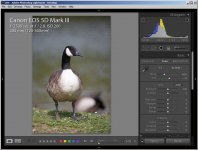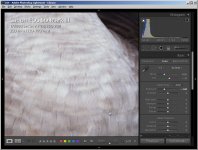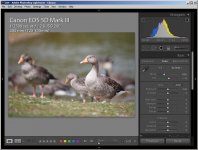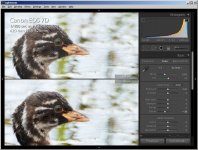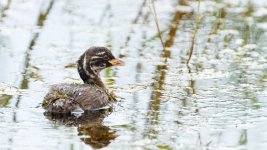George London
Well-known member
How should I expose for shots of black and white birds?
I took some pics of black grouse the other day, and other than constant battle with lack of light I struggled to get contrast/def in both white and black feathers at the same time.
They are under-exposed. I mostly got the contrast in the white feathers but some of the dark feathers are simply blacked out and as soon as definition in the blackest feathers starts showing well the white is overexposed. It's a kind of theoretical question because i never had enough light to over-expose anyway! (Or maybe I'm 'high ISO shy'. To really freeze everything i needed bare min of 500th with IS on tripod).
Understand that individual circumstances will always affect and there won't be a simple answer but any general pointers much appreciated.
I should say when the sun did (eventually...) hit them harsh shadows probably contributed to the problems. Background moor/field no sky. Was using eos 1dmkiv and canon 100 -400.
Thanks! George
I took some pics of black grouse the other day, and other than constant battle with lack of light I struggled to get contrast/def in both white and black feathers at the same time.
They are under-exposed. I mostly got the contrast in the white feathers but some of the dark feathers are simply blacked out and as soon as definition in the blackest feathers starts showing well the white is overexposed. It's a kind of theoretical question because i never had enough light to over-expose anyway! (Or maybe I'm 'high ISO shy'. To really freeze everything i needed bare min of 500th with IS on tripod).
Understand that individual circumstances will always affect and there won't be a simple answer but any general pointers much appreciated.
I should say when the sun did (eventually...) hit them harsh shadows probably contributed to the problems. Background moor/field no sky. Was using eos 1dmkiv and canon 100 -400.
Thanks! George





